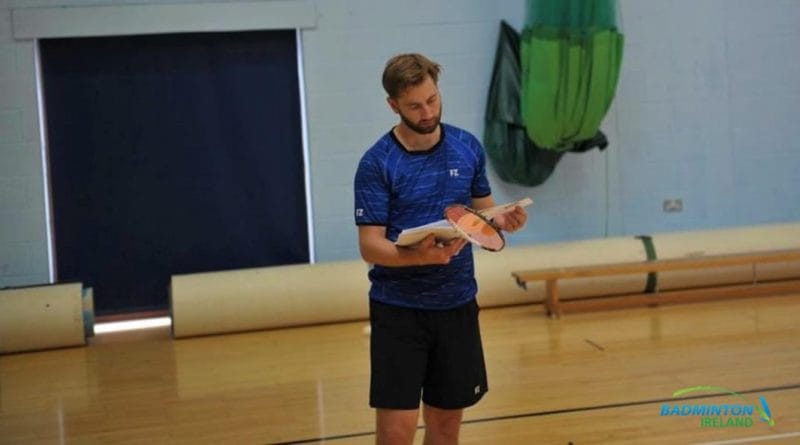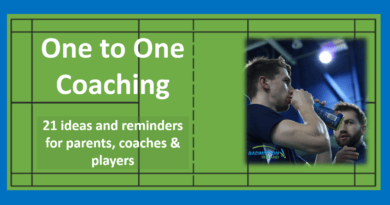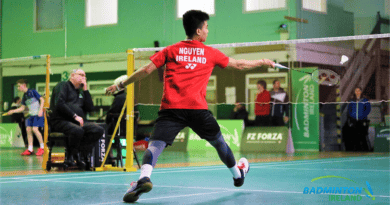6 Ways to work out what to coach next and when to coach it
Have you ever looked at a player and wondered what to coach next and how to coach it?
I know that I have
There seem to be so many things that they need. Or, do you struggle to know exactly what the next step is to ensure that the development is as logical and effective as possible? Decoding what to coach next can sometimes paralyse a coach.
These 6 suggestions will give you a framework to follow and allow you to find the next step.
We will explore some dangers of just jumping straight in with advice, advice that you’ve seen on the internet 🙂
– – – – – – – – – – – – – – – – – –
1 Do you watch your players in competition?
2 Can you break down your technical observations?
3 Do you trust instinctive observations?
4 Have a model(s) for comparison?
5 Do you strive for perfection?
6 When to effect a change in technique?
– – – – – – – – – – – – – – – –
1 Do you watch your players in competition?
 Before deciding what to coach it’s vital that you watch your players in competitions.
Before deciding what to coach it’s vital that you watch your players in competitions.
In fact, it is essential if you want to really understand what they need.
Competition has all the uncertainty, stress and variability that is required for a true test of technique, tactical and mental assessment. Physical elements can be tested off the court if required.
Do not be surprised if what you see isn’t the perfect model, even if it appeared proficient in practice.
This has depressed me often in my early coaching years. It wasn’t until my mentor pointed out that it was just part of the process, i.e. it looks better or perfect in practice, then it appears to fall apart in competition.
The stress and uncertainty in competition will cause players to revert to the strongest habits. Those habits you may have thought had changed. To change in practice is certainly not the same as changing in a match, especially when it’s an important match.
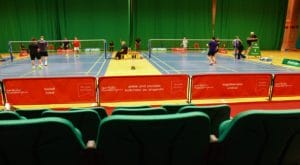 Be aware that most of your observations will come from practice sessions.
Be aware that most of your observations will come from practice sessions.
You may be setting up practices that allow the players to perform this changing skill with lots of successful outcomes. Is this because of the practice or the real change? Make sure that you also watch the player in a competition to fully appreciate and make an assessment of the skill.
Observing in a competition is different than watching practice. Read this post for some ideas 6 ways to improve your observations
Many coaches and parents comment that players perform to a lesser standard in competition compared to practice
Have you had these thoughts?
– – – – – – – – – – – – – – – –
2 Can you break down your observations?
Once you have made your observations and know the general theme then what comes next?
If you have identified a weakness, how will you be able to identify where it originates in a technique and how serious it is or isn’t. This may prove difficult. Separating those critical issues that need immediate attention from those that will be developed later is not easy.
H.A.B.C.A.R.E.
One method is to break down strokes & movements into their parts. The chronological constituent components parts. HABCARE – this is a method created by Roger Mills.
It has transformed how I think about the technical aspects of strokes and movements. In development and in technical fault correction.
Roger later produced M.A.T.C.H.P.L.A.Y.S. that addressed the tactical elements of badminton. Apart from ‘H’ (hold), the rest follow a timed sequence describing what happens on the court.
Hold
Approach
Backswing
Contact
After Stroke
Recovery
Early preparation
(@ RogerMills) look out for a future post 6 Ways to use HABCARE
Using this HABCARE method has proved valuable for me in the past and after a while, it seems to help me every time I coached. It enables the coach to target the specific cause of problems. Identifying those elements that prevent the following actions to flow smoothly.
I recommend starting with issues you see earlier in the HABCARE before addressing those later in the sequence. Check the grip and early preparation (Approach & Backswing). However, it’s your choice and only you can decide. Be aware that this method does not describe a stroke or movement in isolation.
The last letter E (Early preparation) is both the end of one stroke/movement and immediately the start of the next.
Would you like a challenge?
Create a HABCARE for a forehand net shot starting in the midcourt after you play a block back to the opponents net
– – – – – – – – – – – – – – – –
3 Do you trust instinctive observations?
The skill of observing exactly what happened (positive or negative) in a match or single rally requires practice and is a skill that will develop over time.
Trust your feelings as you get more experience: “if it feels or looks wrong then it probably is”.
Ask for an independent viewpoint to confirm your observations. Sit next to someone you trust and compare observations and thoughts. Share your immediate thoughts in a stream of comments. Ask them to listen and then comment back to you.
Then ask them to do the same and see if you are observing similar aspects. Listen to them whilst they verbalise their observations. It’s a great experience to sit next to someone who you trust and is experienced in this skill.
Seek out these opportunities and remember to listen! It’s these times I’ve learned the most.
I’ve spent many happy hours at tournaments listening to people who see things that were right in front of me but that I couldn’t see
Their observations gave me a new insight to take into my practice
– – – – – – – – – – – – – – – –
4 What is your model for comparison?
I have found that asking these following questions has helped me evaluate the things I see.
The last question has probably been the hardest learning point for me!
- What should happen?
- When should it have happened?
- Where should the shuttle travel and in what way (trajectory & speed)?
- Is my expectation applicable for the players current specific standard?
Many coaches view the model for comparison by observing world-class players. Whilst this is of interest, does the model really apply directly to your 12 or 13 yr old player? So, what is ‘acceptable’ for your 12 yr old?
I would like to suggest 3 models for comparison
- A technical HABCARE for every stroke and moment. Have you thought about writing one? Start now.
- The “Playing Basics” (10 of them) that underpin all strokes and movements. (one of the most influential documents I ever read) Click here to read parts 1, 2, 3 & 4
- The model for that stage of development. Use the best players in that age group/standard as a model.
It may take you many years to complete the 3 stages above.
I’ve found that point no. 3 always challenges me. Sometimes the best player in an age group (in junior years) often win because they have an exceptional part of their game that can compensate for possibly weaker parts.
Pick up a pen and paper and write down the essential Technical, Tactical and Mental skills you think an U13 player would need to be the best in your Region
Do you recognise the difference between the 3 models? Could you start to populate your thoughts in all 3 ?
– – – – – – – – – – – – – – – –
5 Do you strive for perfection?
Can you accept imperfections and variability between one repetition and another by your player? If not, then I suggest you are in for a tough coaching journey.
Accepting that things will not be ‘perfect’ will allow you to focus on finding those elements that, once improved, make the biggest impact. Yes, look for where to improve things, but allow some errors, variability or inconsistencies.
I am not suggesting that you don’t try to help your players. Or that you allow them to perform with techniques that will prevent others from developing. Far from it.
There are certainly ‘gross’ or ‘classical’ errors that need to be eradicated or prevented.
Focus on these and be prepared to accept something less than perfection. You will enjoy your coaching much more. Ask yourself; when will you be ‘Perfect’ in the art of coaching?
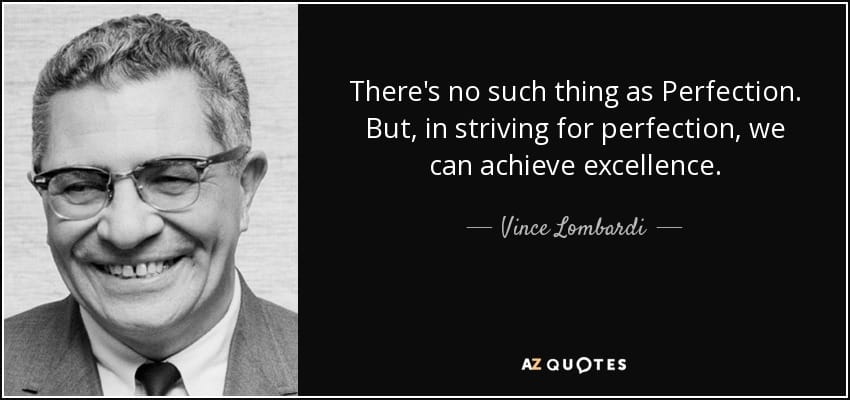
– – – – – – – – – – – – – – – –
6 When to effect a change in technique?
 It can be very tempting to see an error or inappropriate technique and start correcting immediately.
It can be very tempting to see an error or inappropriate technique and start correcting immediately.
Have you ever stopped to think –
… Is this what needs changing or is the solution something else?
… How will the player react if I try to make a change?
… Is this an appropriate time of the season to make the change?
… How will this affect the rest of this tournament if I try to change this in the next 20 seconds !!
Ok, the last question is a little sarcastic.
During competition is not the right time to change a technique but you may be tempted.
Being aware of the impact of change, the time of the season, the loss of skill, etc. is critical.
How to effect change is another skill for you to develop. Try to use different ways to vary the practice yet still reinforce the new or change in skill.
Look out for a future post “6 ways to change a technique”
My suggestion is that once you have spent time identifying what you would like to change and used the ideas above
Then you spend just as much time working out how and when to introduce a change
I would really like to hear your ideas on how to identify what to coach and when to coach it.
If you are a player, how do you decide which areas of your game need to be worked on over the next few months?

